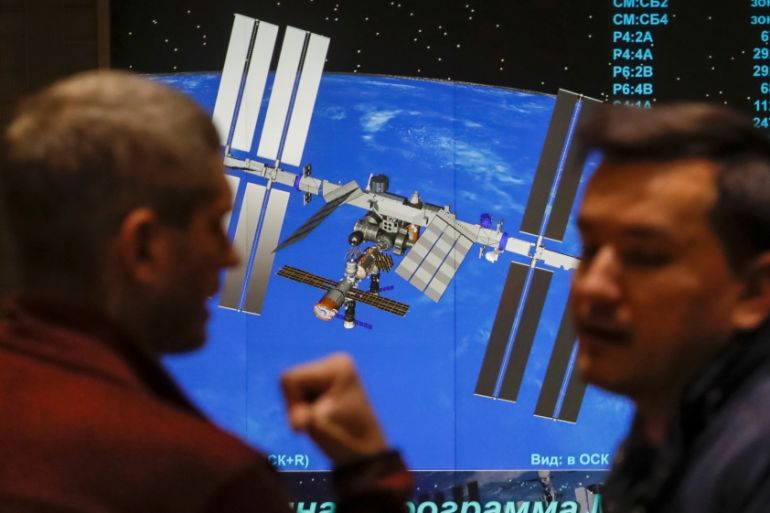Soyuz rocket failure caused by damaged sensor, says Russia
The Soyuz rocket failure was caused by a sensor that was damaged during assembly, according to official investigation.

A failed Russian Soyuz rocket launch three weeks ago that aborted after just two minutes was caused by a sensor that was damaged during assembly, according to an official investigation.
The Soyuz-FG rocket carrying NASA astronaut Nick Hague and Roscosmos’ Alexei Ovchinin failed minutes into the October 11 flight, sending their emergency capsule into a sharp fall back to Earth.
Keep reading
list of 4 itemsHong Kong’s first monkey virus case – what do we know about the B virus?
Why will low birthrate in Europe trigger ‘Staggering social change’?
The Max Planck Society must end its unconditional support for Israel
The two men landed safely on a steppe in Kazakhstan; the incident is the first of its kind for Russia’s manned programme in over three decades.
Presenting the findings of an official investigation into the accident, Igor Skorobogatov told reporters that two more Soyuz rockets may have the same defect and that additional checks were being introduced into the rocket assembly process.
“The reason for the abnormal separation … was due to a deformation of the stem of the contact separation sensor…,” Skorobogatov told reporters.
“It has been proven, fully confirmed that this happened specifically because of this sensor, and that could only have happened during the package’s assembly at the Baikonur Cosmodrome,” he said.
The accident was the first serious launch problem experienced by a manned Soyuz space mission since 1983 when a crew narrowly escaped before a launchpad explosion.
![Oleg Skorobogatov, head of the investigating commission, speaks at a news conference in the Russian Mission Control Centre in Korolev [Sergei Karpukhin/Reuters]](/wp-content/uploads/2018/11/216f86c4e37a4484a1d1f249a561b70c_18.jpeg)
Skorobogatov said officials are now taking steps, including putting all assembly staff through competence tests and additional training, to make sure such incidents will not happen again.
Russian space officials plan to conduct two other unmanned Soyuz launches before launching a crew to the space station.
The current space station crew – NASA’s Serena Aunon-Chancellor, Russian Sergei Prokopyev and German Alexander Gerst – was scheduled to return to Earth in December after a six-month mission but will have to stay there for at least an extra week or two to ensure a smooth carry-over before the new crew arrives in early December.
The Russian Soyuz spacecraft is currently the only vehicle for ferrying crews to the International Space Station after the US space shuttle fleet retired. Russia stands to lose that monopoly with the arrival of SpaceX’s Dragon and Boeing’s Starliner crew capsules.